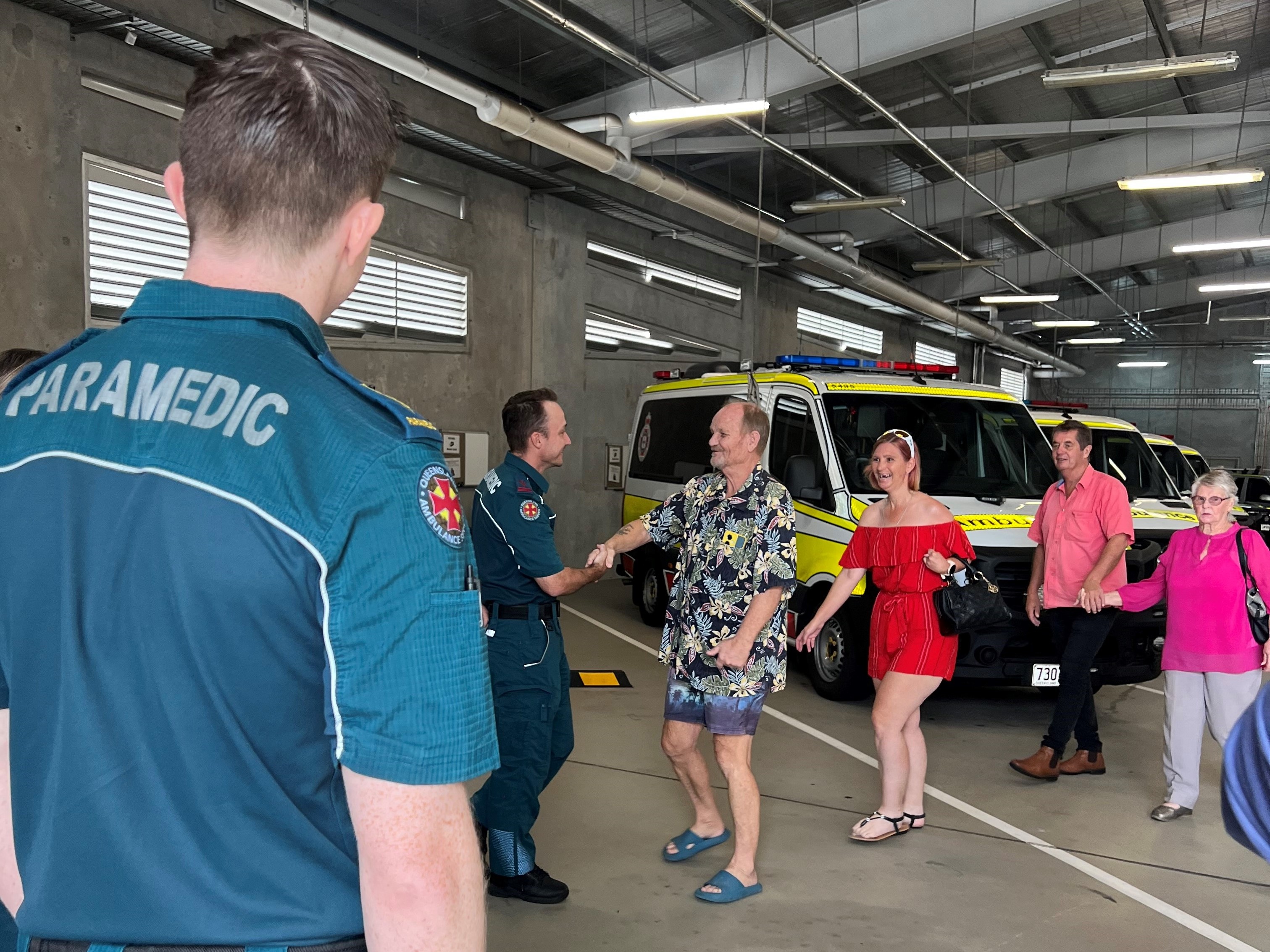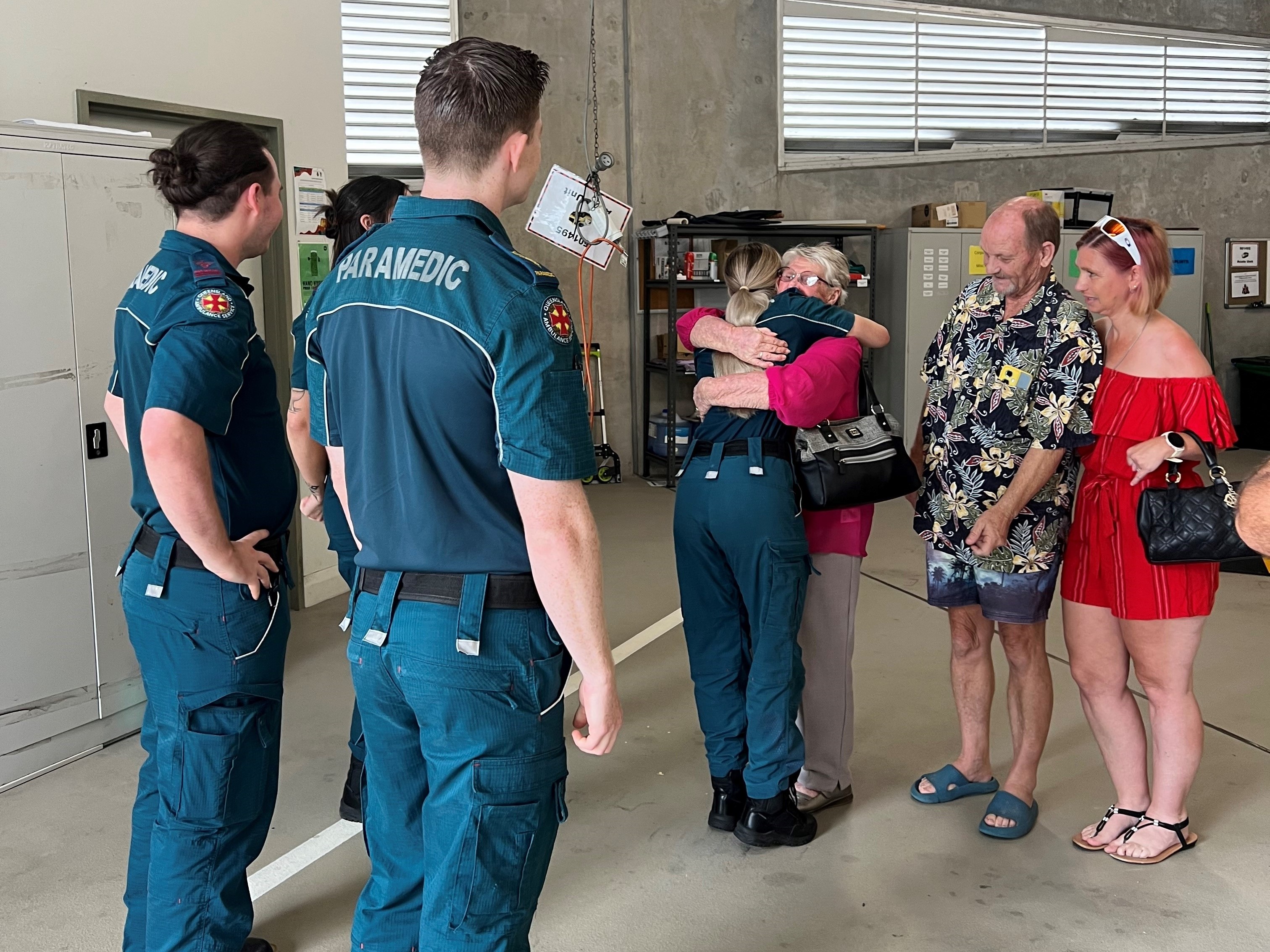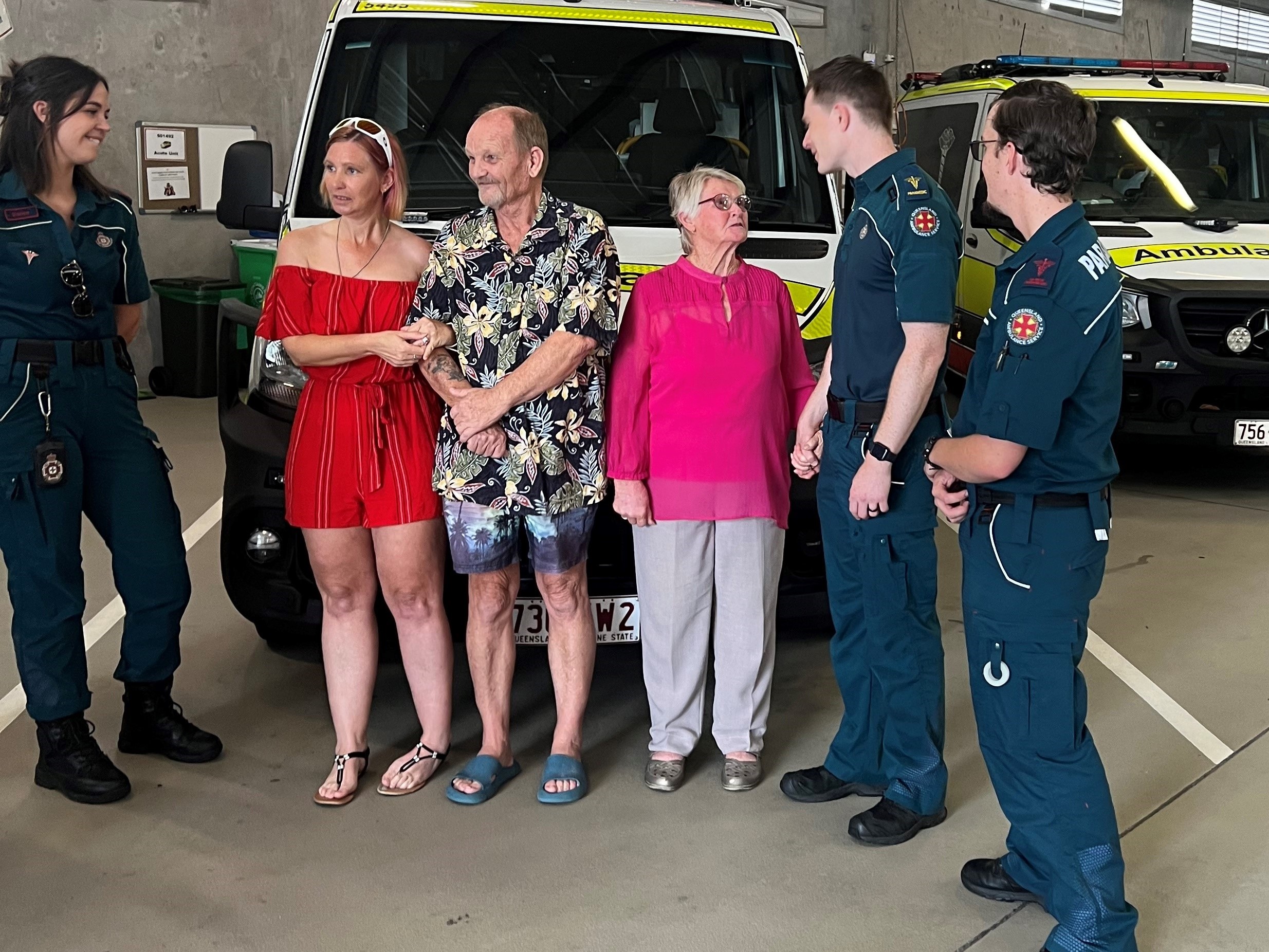
In early February 2025, 64-year-old Gary Fletcher had decided to start driving himself to hospital from his Narangba home after an extreme bout of chest pain while mowing, but his plans changed quickly.
“I realised I didn’t want to put the public in danger, so I pulled over and called the ambulance,” said Gary.
Queensland Ambulance Service paramedics Tim Bailey and Bianca Jimmieson from Lawnton Station were the first to arrive and said it was pouring with rain by the time they’d stopped behind Gary’s parked car on Boundary Road.
“I’d made the decision to try and get Gary into the ambulance as quickly as possible,” said Tim.
“During this transfer from his car to our vehicle, he’s collapsed on the bitumen, and rolled down the embankment into a ditch which had some water in it – not an ideal situation.
“We got him onto the stretcher as quickly as possible and commenced cardiopulmonary resuscitation (CPR), initially with a shock and then onto compressions and other advanced life support.”
Critical Care Paramedic Gareth Clarke, and intern, Tim Camus, had been attached to the case to assist with this advanced life support.
Gareth said Gary had presented with Ventricular Fibrillation, (VFib or VF) a life-threatening cardiac arrhythmia where the heart's lower chambers (ventricles) quiver erratically instead of contracting normally, leading to a complete failure to pump blood and resulting in cardiac arrest and potential death if not treated immediately.
After the standard treatment failed to work, Gareth said he made the call to QAS Medical Director Dr Stephen Rashford for permission to “engage in aggressive therapies”.
“These aggressive therapies included intra-arrest thrombolysis, so I could attempt to bust the clot we believed was in one of the major vessels around his heart,” Gareth said.
The teams continued to attempt to resuscitate Gary at the roadside for almost an hour.
During that time, he received 15 shocks, a large number of drugs, with a mechanical chest compression device providing continued compressions throughout, freeing up the crews to allow them to provide other life-saving care. While these two teams worked on Gary, paramedics Brittany Casey and Harry Bates had seen the teams in passing, so stopped to offer their assistance as well.
“Realistically, it was at the spot where things were looking pretty grim for Gary – we were looking to terminate resuscitation,” Gareth reflected.
“As we were having a conversation around that, it’s at that point Gary achieved a return of spontaneous circulation (ROSC), where his heart has picked up himself.
“I think what was most encouraging for us was that Gary then required sedation for his transport to hospital.”
On his arrival at the Prince Charles Hospital, Gary’s brain showed more encouraging signs, and extra sedation was required to allow the interventional cardiologists to insert a balloon pump into Gary’s heart, to open its surrounding vessels so it could beat on its own again.
“It was a massive team effort,” Gareth said.
“It was a team effort from all the crews, from the doctor on the consult line, the hospital staff, as well as Gary himself for calling an ambulance and a family member who was able to give us the helpful collateral information.”



On Monday, 24 March, Gary was able to thank this team for bringing him back to life.
Gary, his wife Maree, and his Mum, Jan, attended North Lakes Ambulance Station; Gary full of excitement to thank the crews with big smiles, handshakes, hugs and praise.
“I still can’t believe it happened,” he said, “They were my angels.”
Continuing that sentiment, his very relieved Mum, Jan called it a miracle amid tight hugs and teary eyes.
“I will never forget this day – I lost his dad the same way many years ago… It [saving Gary] was a miracle.
“I just thank this team who worked so hard to bring him back and I’ll never ever forget you.
“My son has been the one and only who’s stood by my side for many years.
“Thank you isn’t enough, there are no words good enough.”
All crew members were thrilled to see Gary so healthy once more.
“It was very hard, we had to move very quickly, make some pretty critical decisions pretty quickly” Bianca said.
“We’re overwhelmingly grateful to meet Gary, his mum and his wife and we were very fortunate to have the CCP team with Gareth and Tim – I learnt so much just from their decision making and the debrief we did afterwards.”
Gareth was also happy to see Gary again, especially after his full recovery.
“These cases are really, really few and far between, particularly for someone to have such a wonderful neurological recovery where he’s presenting so well after an hour of resuscitation, it’s rarely heard of,” Gareth said.
“I think we’ve got a service here that is really wanting to apply really high-quality nuanced care and that was thankfully facilitated.”
State wide media teams were able to attend this reunite to help QAS grow public awareness around recognising cardiac arrest symptoms, the dangers of driving during a health emergency, and encouraged people to dial Triple Zero (000) in situations like these.
Gary is recovering well and has a long list of medications and firm instructions to take it easy.
And like many old-school sons, his mother joked, if he didn’t follow these instructions, there’d be consequences – “He’s not too big to bend over my knee and give him a smack!"